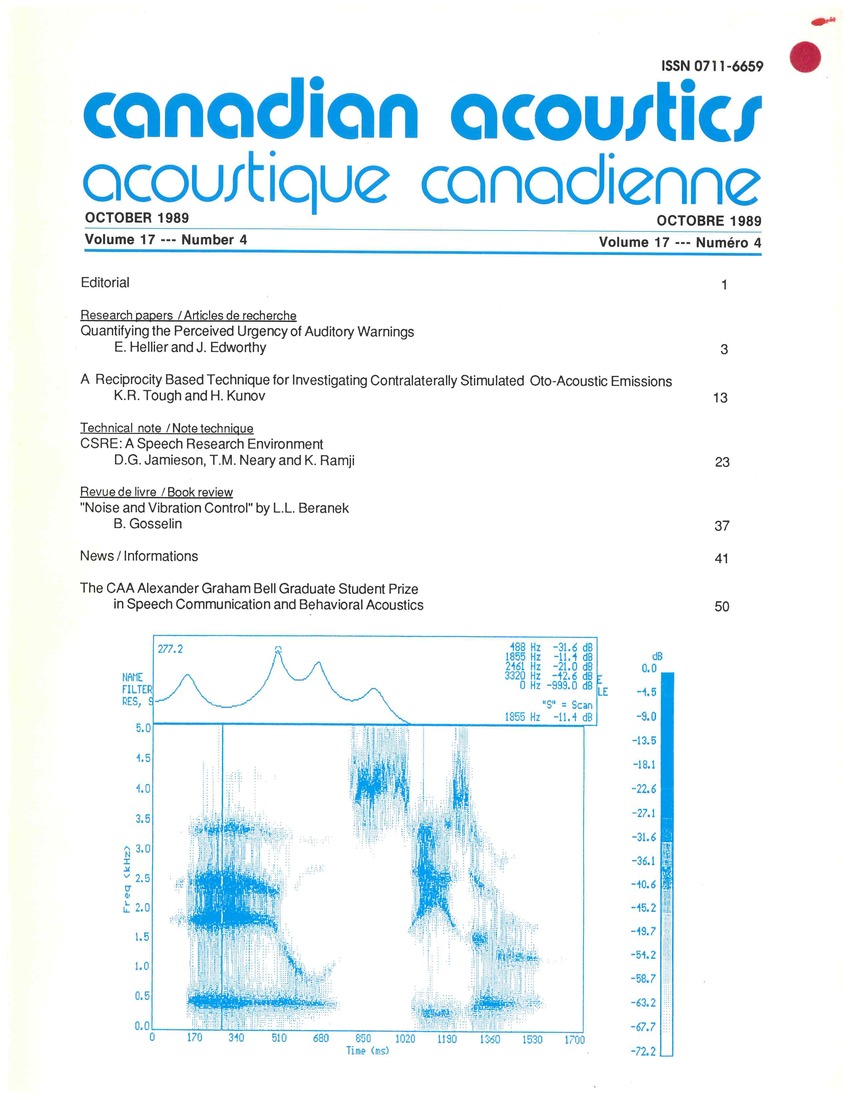Quantifying the perceived urgency of auditory warnings
Mots-clés :
hearing, psychology, warning length, repetition number, spectral parameters, perceived urgency, auditory warnings, subjective response, temporal parameters, warning speed, Steven's Power LawRésumé
La conception d'avertisseurs sonores fondée sur les propositions de Patterson, permet d'établir une certaine relation entre le son avertisseur lui-même et la réponse subjective qu'il engendre. Une relation entre le son avertisseur et la réponse subjective qu'il provoque peut être établie à partir d’un paramètre important à savoir la perception de l'urgence. Afin d'établir cette relation, il est important de connaître la nature et la force des effets de plusieurs paramètres spectraux et temporels. Trois expériences portant sur l'effet du nombre de répétitions, de la vitesse et de la longueur du signal sur la perception de l'urgence sont rapportées. Les résultats démontrent qu'un accoissement sur l'un ou l'autre des paramètres étudiés se traduit par un accroissement de l'urgence véhiculée par le signal. Une quatrième expérience avait pour but de tester un ensemble de stimuli qui variaient à la fois en fonction du nombre de répétitions et de la vitesse, alors que la durée du signal était maintenue constante. Les résultats démontrent que des différences majeures dans la perception de l'urgence d'un avertisseur sonore peuvent être mesurées même si la durée de l'avertisseur est maintenue constante. La loi de puissance suggérée par Stevens a été appliquée aux données dans le but de quantifier la relation de puissance entre les paramètres physiques des stimuli (nombre de répétitions, vitesse et durée) et les valeurs subjectives (perception de l'urgence).Fichiers supplémentaires
Publié-e
Comment citer
Numéro
Rubrique
Licence
Author Licensing Addendum
This Licensing Addendum ("Addendum") is entered into between the undersigned Author(s) and Canadian Acoustics journal published by the Canadian Acoustical Association (hereinafter referred to as the "Publisher"). The Author(s) and the Publisher agree as follows:
-
Retained Rights: The Author(s) retain(s) the following rights:
- The right to reproduce, distribute, and publicly display the Work on the Author's personal website or the website of the Author's institution.
- The right to use the Work in the Author's teaching activities and presentations.
- The right to include the Work in a compilation for the Author's personal use, not for sale.
-
Grant of License: The Author(s) grant(s) to the Publisher a worldwide exclusive license to publish, reproduce, distribute, and display the Work in Canadian Acoustics and any other formats and media deemed appropriate by the Publisher.
-
Attribution: The Publisher agrees to include proper attribution to the Author(s) in all publications and reproductions of the Work.
-
No Conflict: This Addendum is intended to be in harmony with, and not in conflict with, the terms and conditions of the original agreement entered into between the Author(s) and the Publisher.
-
Copyright Clause: Copyright on articles is held by the Author(s). The corresponding Author has the right to grant on behalf of all Authors and does grant on behalf of all Authors, a worldwide exclusive license to the Publisher and its licensees in perpetuity, in all forms, formats, and media (whether known now or created in the future), including but not limited to the rights to publish, reproduce, distribute, display, store, translate, create adaptations, reprints, include within collections, and create summaries, extracts, and/or abstracts of the Contribution.


